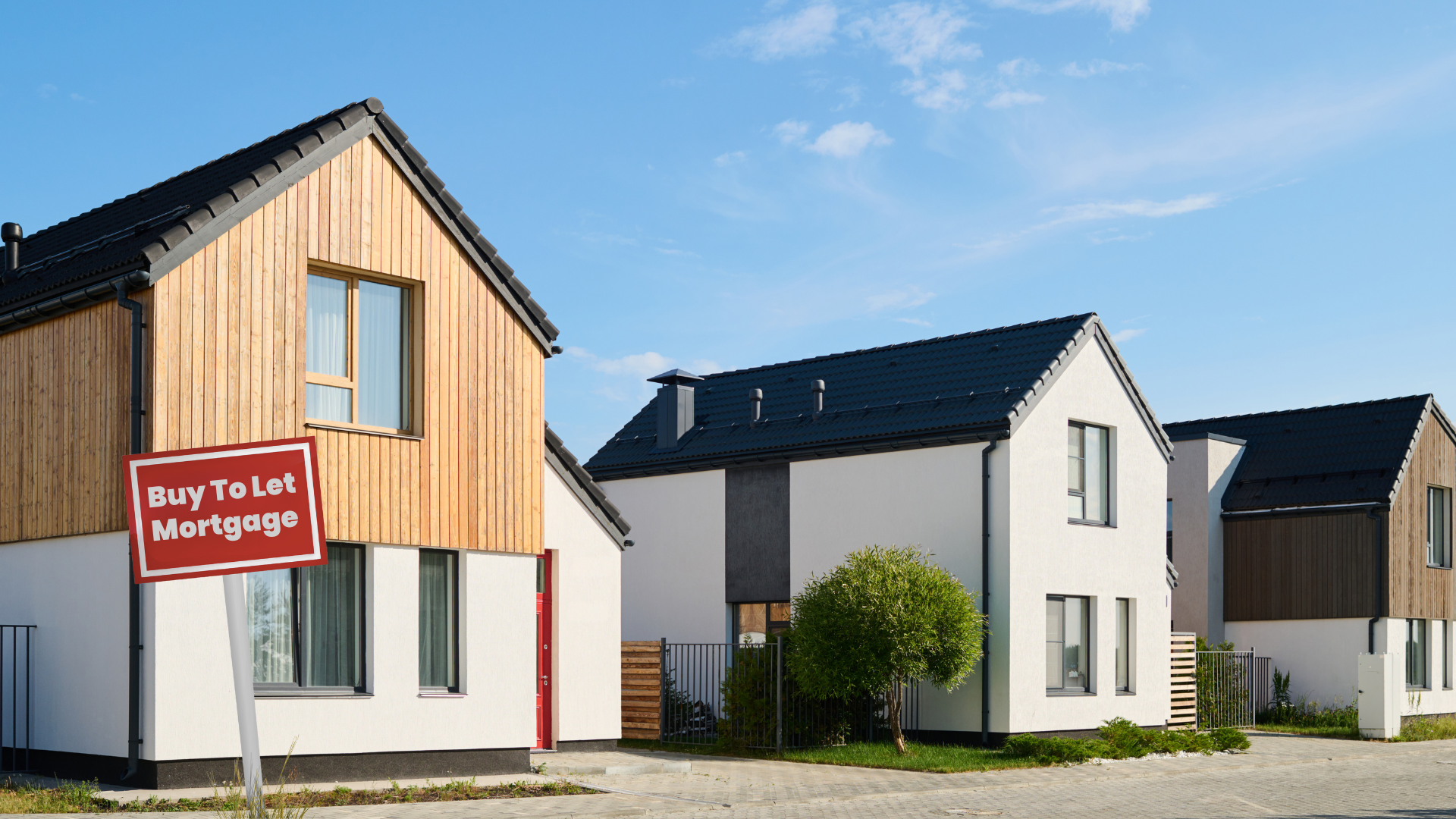- Can You Get a Buy-to-Let Mortgage in Scotland?
- Do You Qualify?
- How Much Can You Borrow?
- How Does the Scottish Buy-to-Let Market Differ?
- Buy-To-Let Taxes In Scotland
- What Rates Should You Expect?
- Who Offers Buy-to-Let Mortgages in Scotland?
- Where Are The Best Areas for Buy-to-Let Investments in Scotland?
- Key Takeaways
- The Bottom Line
How To Get Buy-To-Let Mortgages In Scotland?

Being a landlord in the UK comes with the perk of steady rental income, making it an appealing investment for many.
And if you’re eyeing Scotland for your next property, here’s something you need to know.
Finding a buy-to-let mortgage in Scotland can be trickier than in England and Wales.
Fewer lenders offer them, especially in remote areas. That’s because there’s less demand for rentals in those places compared to big cities.
So, you might have fewer choices for your mortgage.
But don’t let that put you off. With careful planning and the right lender, stepping in the buy-to-scene is possible.
This guide is packed with all you need to know about securing a buy-to-let mortgage in Scotland.
Ready?
Can You Get a Buy-to-Let Mortgage in Scotland?
Yes, you can get a buy-to-let mortgage in Scotland, but they’re less common than in England or Wales. You might find your choice of lender is more limited, especially in less accessible areas.
Some lenders also have specific postcode restrictions. This means they might only lend in certain areas, mainly on the mainland and a few islands.
If you’re looking to buy a property in a remote area, finding a suitable lender might be challenging.
Do You Qualify?
For a buy-to-let mortgage, here’s what you typically need:
- Age Requirements – Most lenders prefer you to be at least 25 years old. However, age limits can vary, so it’s worth checking.
- Deposit – You’ll need a deposit of 20-25% of the property’s value. The more you can provide, the better the mortgage terms you might get.
- Rental Yield – Your expected rental income should ideally be 125-145% of the mortgage repayments. This ensures you can cover the loan even if rental prices fluctuate.
- Personal Income – Some lenders want you to earn a minimum annual income, often around £25,000, separate from rental earnings. Not all lenders require this, but it can be a factor.
- Credit History – A solid credit history is crucial. It shows lenders you’re reliable and manage debts well.
- UK Residency – Being a UK resident makes it easier for lenders to assess your financial status. If you’re not a resident, you might still be considered, but expect more stringent checks.
- Property Experience – Owning a residential property, either your home or another investment, can work in your favour, demonstrating your property management experience.
Meeting these criteria puts you in a strong position to apply for a buy-to-let mortgage in Scotland.
Specific requirements can vary by lender, so it’s always best to check directly or work with a mortgage broker who can guide you through the process.
How Much Can You Borrow?
Lenders look at potential rental income to decide how much you can borrow. They usually want the rent to cover at least 125% to 145% of the mortgage payments.
For example, if your monthly mortgage payment is £500, you might need a rental income of at least £625 to £725.
Rental yield and your financial situation also play a part. Lenders use ‘stress tests’ to ensure you can cover payments if rates rise.
To see what you might afford, use our buy-to-let calculator. It’s a simple tool to help you plan your investment.
How Does the Scottish Buy-to-Let Market Differ?
If you’re looking to invest in Scotland, here’s what you need to know.
Landlord Registration
In Scotland, before you let out a property, you must register as a landlord with the local council. This ensures you meet the legal standards.
There’s a principal fee of £75 and a property fee of £17 for each property you let. This process is about making sure landlords are fit to rent out properties and helps maintain standards.
Landlord Accreditation
While not mandatory, becoming an accredited landlord can boost your credibility.
Scotland offers its scheme through Landlord Accreditation Scotland, whereas in England, you can choose from multiple schemes, including the London Landlord Accreditation Scheme.
HMO Licencing
If you’re planning to rent your property to three or more tenants not from the same family, you’ll need a House in Multiple Occupation (HMO) licence.
This is similar across the UK, but in Scotland, it’s your local council that issues this. The HMO licence ensures the property is managed well and is safe for tenants.
Tenancy Deposit Schemes
Deposit protection is consistent across the UK, with a 30-day window to secure deposits in a registered scheme.
However, in Scotland, you specifically need to use one of the Scottish schemes: Letting Protection Service Scotland, Safe Deposits Scotland, or mydeposits Scotland.
Right to Rent Checks
Unlike in England and Wales, Scotland does not require landlords to conduct Right to Rent checks, simplifying the process for Scottish landlords.
Buy-To-Let Taxes In Scotland
Buying a buy-to-let property in Scotland involves paying taxes. Let’s break it down:
Land and Buildings Transaction Tax (LBTT)
Land and Buildings Transaction Tax (LBTT) is the tax you pay when buying a property in Scotland, similar to Stamp Duty in other parts of the UK.
If you’re buying a buy-to-let property or a second home for over £40,000, there’s an extra 6% tax on the whole price, called the Additional Dwelling Supplement (ADS).
Here’s a table for standard LBTT rates:
| Property Price (£) | LBTT Rate |
|---|---|
| Up to 145,000 | 0% |
| 145,001 to 250,000 | 2% |
| 250,001 to 325,000 | 5% |
| 325,001 to 750,000 | 10% |
| Over 750,000 | 12% |
To clear things up, say you’re buying a buy-to-let property for £300,000.
- For the first £145,000, you pay nothing.
- On the next £105,000 (£250,000 – £145,000), you pay 2%, which is £2,100.
- For the remaining £50,000 (£300,000 – £250,000), you pay 5%, which adds up to £2,500.
So, your LBTT is £2,100 + £2,500 = £4,600.
But don’t forget the ADS–since it’s a buy-to-let, you pay an extra 6% on the entire £300,000, which is £18,000.
In total, for a £300,000 buy-to-let property, you’d pay £22,600 in taxes (£4,600 for LBTT + £18,000 for ADS).
This tax applies whether you buy the property outright or with a mortgage, and it doesn’t matter if the property is freehold or leasehold.
Not sure how much tax you’ll owe? Use our stamp duty calculator to know how much you’ll need to pay.
Income Tax Rates in Scotland
In Scotland, income tax is managed slightly differently, with specific rates and bands.
If you earn rental income in Scotland, this income could be subject to the following Scottish Income Tax rates:
| Tax Band | Income Range | Tax Rate |
|---|---|---|
| Up to £12,570 | No tax is applied | |
| Starter Rate | £12,571 – £14,732 | 19% |
| Basic Rate | £14,733 – £25,688 | 20% |
| Intermediate Rate | £25,689 – £43,662 | 21% |
| Higher Rate | £43,663 – £150,000 | 41% |
| Top Rate | Over £150,000 | 46% |
Note: These rates apply to non-savings and non-dividend income. Your circumstances and the exact amount of rental income can affect the tax rate you’ll pay.
Capital Gains Tax (CGT) for Rental Properties
When you sell a buy-to-let property in Scotland, you might make a profit, known as a ‘capital gain.’
This gain can be subject to Capital Gains Tax (CGT). The CGT rates for property in the UK (including Scotland) are:
- 18% for basic rate taxpayers
- 24% for higher and additional rate taxpayers
But, you only pay CGT on the profit that exceeds your annual tax-free allowance, known as the Annual Exempt Amount, which is £12,350 for individuals (£24,700 for couples) for the 2024/25 tax year.
It’s essential to consider these tax implications when investing in buy-to-let properties in Scotland, as they can affect the profitability of your investment.
Consulting with a tax advisor can provide personalised advice tailored to your specific situation.
What Rates Should You Expect?
Buy-to-let mortgage rates can change often. They depend on economic factors, the Bank of England’s base rate, and lender-specific criteria.
As of the current market conditions, you might see rates starting at about 3% or higher.
But, the actual rate available to you will depend on your specific circumstances like your credit score, the property’s rental income potential, and your deposit size.
You must also consider other mortgage fees. This includes arrangement fees, valuation fees, and legal costs.
Besides the mortgage, you must plan for letting agent fees if you use one upkeep costs for the property and other expenses like insurance and safety checks.
It’s a good idea to talk to a mortgage broker who knows all about buy-to-let mortgages. They can help you find the best deal for your situation.
Who Offers Buy-to-Let Mortgages in Scotland?
In Scotland, several lenders offer buy-to-let mortgages, catering to a variety of needs for property investors. These lenders range from high-street banks to specialist mortgage providers.
Some of the notable lenders include:
- NatWest
- Barclays
- HSBC
- Bank of Scotland
- Santander
- Accord Mortgages
- Skipton Building Society
- Clydesdale Bank
- Virgin Money
- The Mortgage Works (TMW)
It’s important to note that the availability of products, terms, and rates can vary based on your circumstances and the specifics of the property you intend to purchase.
Additionally, some lenders may have geographical restrictions or specific criteria that need to be met.
Consulting with a mortgage broker or advisor who has experience in the Scottish property market can provide you with tailored advice and help you navigate the options available from these and other lenders.

Where Are The Best Areas for Buy-to-Let Investments in Scotland?
The best areas for buy-to-let investments in Scotland often include cities with strong rental demand, such as:
- Edinburgh – Known for its tourism, universities, and festivals, Edinburgh has high rental demand, making it a solid choice for buy-to-let investments.
- Glasgow– Scotland’s largest city offers a vibrant rental market, driven by a large student population and growing job opportunities.
- Aberdeen – Often referred to as the “Oil Capital of Europe,” Aberdeen has a fluctuating but potentially lucrative rental market due to its energy sector.
- Dundee – With its waterfront redevelopment and cultural scene, Dundee is becoming increasingly attractive for renters, particularly students and young professionals.
- Stirling – Close to both Edinburgh and Glasgow, Stirling is popular with commuters. Its historic charm and university also contribute to rental demand.
When considering a buy-to-let investment, look for areas with strong rental yields, good local amenities, and transport links. University towns and cities are often good bets due to the steady demand from students.
Always research the local market thoroughly to understand rental demand and potential property values.
Key Takeaways
- You can get a buy-to-let mortgage in Scotland, but choices may be limited, especially in remote areas.
- To qualify, you’ll typically need to be over 25, have a 20-25% deposit, and show that rental income will cover 125-145% of mortgage payments. A good credit history and UK residency help too.
- In Scotland, you must register as a landlord, and you might need an HMO licence for certain rental setups.
- The amount you can borrow largely depends on the expected rental income covering the mortgage payments by a certain percentage.
- Buying a buy-to-let property in Scotland involves paying LBTT and an Additional Dwelling Supplement (ADS) if it’s a second home.
- Mortgage rates vary based on economic factors and your circumstances. Don’t forget to budget for additional costs like letting agent fees and property upkeep.
- Top areas for buy-to-let investments include Edinburgh, Glasgow, Aberdeen, Dundee, and Stirling, thanks to their strong rental demand.
The Bottom Line
Investing in buy-to-let properties in Scotland can be rewarding. Keep in mind the unique aspects of the Scottish market, from landlord registrations to property taxes.
First, pick a suitable property and make sure you meet the lender’s requirements (Our guide can help with that).
Next, decide whether to buy as an individual or a limited company. Buying as a company can often save on taxes.
Then, get your business plan and paperwork in order. You’ll need proof of income, a deposit, bank statements, and ID. Once you’re all sorted, it’s time to apply to the right lender for a buy-to-let mortgage.
Feeling overwhelmed? A good buy-to-let mortgage broker can make this process smoother. They provide personalised advice to help you simplify the mortgage process and find the best deals.
If you’re considering a buy-to-let mortgage in Scotland, reach out to us. We’ll match you with a skilled mortgage broker for a free, no-obligation consultation.
Get Matched With Your Dream Mortgage Advisor...

Frequently asked questions
Can I use my rental property for holiday lets?
Yes, you can. However, with a few lenders offering mortgages for holiday lets in Scotland it might be a challenge.
>> More about Holiday Let Mortgages.
Is Let-to-Buy an option in Scotland?
Yes, let-to-buy is an option in Scotland.
A let-to-buy mortgage allows you to rent out your current home while buying a new one to live in. This is different from a buy-to-let mortgage, which is used solely for purchasing an investment property to rent out.
In a let-to-buy situation, you change your existing home’s mortgage to a buy-to-let mortgage. Then, you get a new residential mortgage for the new home you’re buying.
This approach can be useful if you’re moving but want to keep your current home as a rental property, perhaps because it’s not the right time to sell or you see good rental potential in it.




